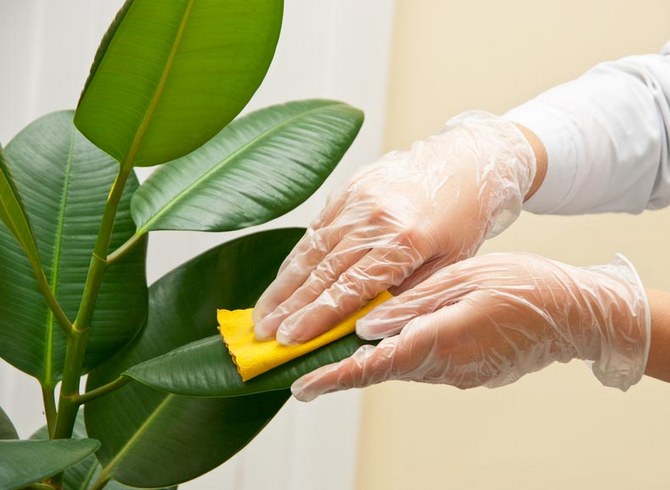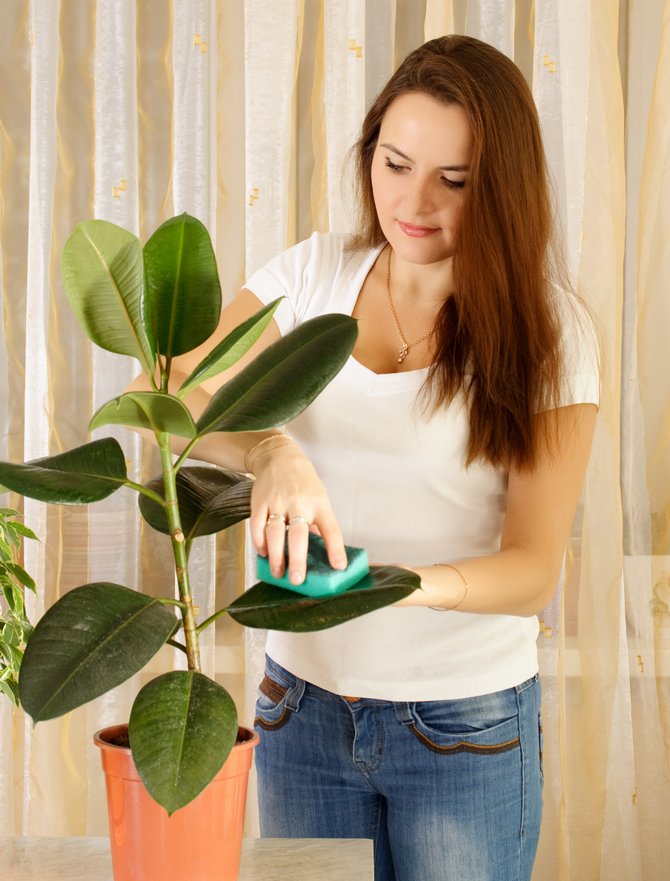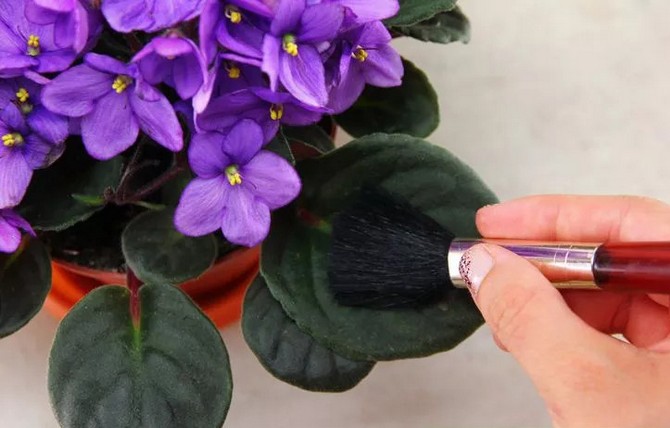Houseplants bring comfort to the house, giving us the joy of contemplating living beauty. In addition, they play another important, but invisible to the ordinary eye, role – the role of a home natural air purifier or filter that can dispose of dust, dirt and toxins..
The leaves are used to filter the air. Dust, dirt and soot settle on their surface. Over time, the amount of substances deposited on the leaves increases and leads to clogging of the stomata, depriving the plant of the ability to breathe fully, provoking the occurrence of diseases and the risk of pest damage.
This is why it is so important to periodically peel the leaves. You can do this routinely, for example, once every two weeks, or spontaneously, as needed, guided by visual observations. But you need to do it.
Leaf cleaning can be done in different ways. Its choice depends on the size and characteristics of the cover of the leaf blade..
Cleaning large smooth or leathery leaves
Such leaf blades are characteristic of ficus, dieffenbachia, croton. On large leaves and pollution is more noticeable. Therefore, they are cleaned more often – weekly..
With a soft damp cloth, tissue or sponge, gently wipe the leaflet on each side.
Cleaning cut or twisted leaves
Such leaves are typical for ferns, crassula, dracaena. It is more convenient to clean them with a warm shower with a low pressure of water. Do not forget to pre-cover the primer with a film that will protect it from erosion..
A warm shower will favorably accept any plant, so large-leaved forms of plants can also be pampered with..
It happens that soot and fat settle on the leaves of plants. In this case, the use of mild (baby) soap or shampoo is appropriate. The soap solution is washed off with warm water..
How to clean plants with pubescent leaves
The leaves of violets, gloxinia, and some begonias are pubescent. How do I clean them? In this case, it is advisable to arrange dry cleaning with a soft brush, brush or a lint-free cloth.
The use of water and even more so soap is appropriate only in exceptional cases. For example, with very strong or greasy contamination.
Wet cleaning is carried out during the day. Before the end of the day, the leaves should definitely dry out. Moreover, it will be better if they are dried in a dark and warm room, in the complete absence of drafts..
Alternative methods for cleaning plant leaves
In addition to the traditional methods of leaf cleaning described above, there are other, alternative.
Some growers practice rubbing their pet’s leaves with vegetable oils, milk, beer, egg yolk, or a mild vinegar solution. It is believed that in this case the plant receives more nutrients and looks more spectacular..
A variety of commercially available plant polishing sprays will help to achieve a special shine of the leaves..
As you can see, caring for green pets should not be limited to watering and feeding. There are several more important, but simple activities that should not be neglected..



